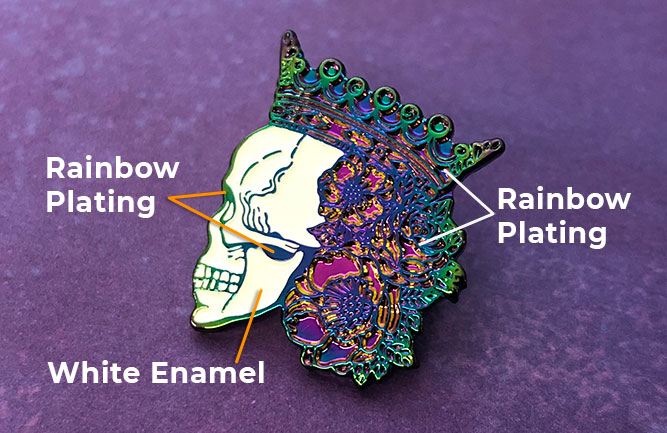What Makes a Good Pin Design?
You may have a design in mind for your first pin, but will the idea translate well into pin form? Creating art that will be viewed on a flat surface or on a screen is much different from designing a pin that will be turned into metal and filled with enamel. If you are adapting an existing design into pin form, it can sometimes be necessary to remove certain details and simplify colors. Combining similar colors to reduce the total color count will save you money as well. Most successful pin designs are somewhat simple, yet have a strong idea.
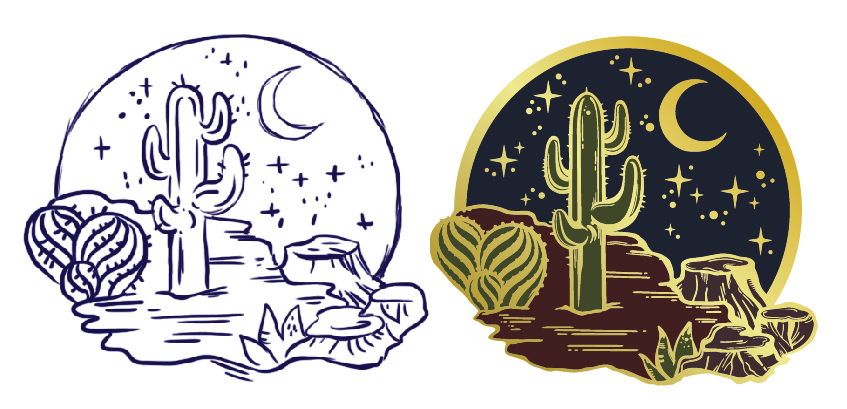
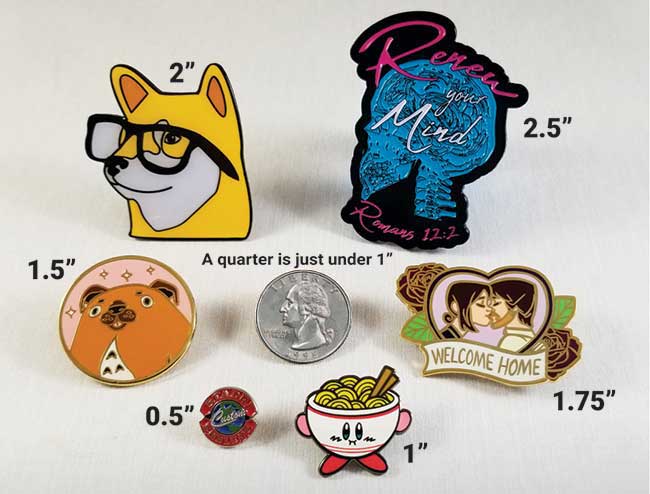
Overall Pin Size
The size of your pin is a very important consideration. While it's possible to make very small pins, or even very large ones, size usually comes down to your design. Larger pins are very eye-catching, but they can be impractical to wear. Smaller pins can also be appealing, but they need to be simple to work well.
Your specific design will dictate the ideal size to make your pins. The most common size is 1 - 1.5 inches. Most people tend to overestimate rather than underestimate what the size should be. Be careful, because this could end up costing you a lot of money! The majority of pins don’t have to be over 1.5 inches, however, if your design is super complex, you might want to consider it.
Does your pin design have text? Make sure that it's large enough to be legible, especially if your pin is on the smaller side. Try printing out your pin at full size to see how it will look at various sizes.
Choosing Enamel Colors
You are not required to specify your colors, but many pin designers do. Enamel colors must be matched to a Pantone color. If you have Pantone colors selected, feel free to send them to us. If not, then we will select the Pantone colors that most closely match your artwork.
Please note that everyone’s computer monitors are configured differently. A color might appear slightly different on your screen than it does on ours. Not every color you can make in Photoshop will have a Pantone color that matches exactly. Matching colors to a Pantone book is the best way to make sure the colors you selected on screen are as close as possible to reality.
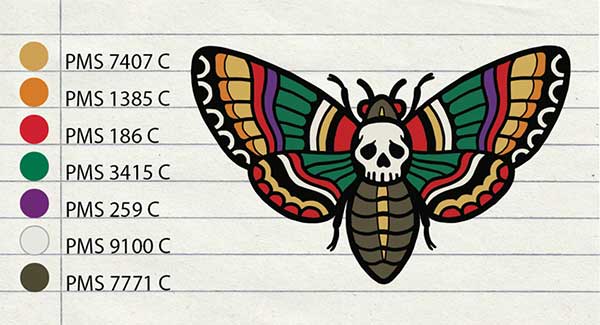
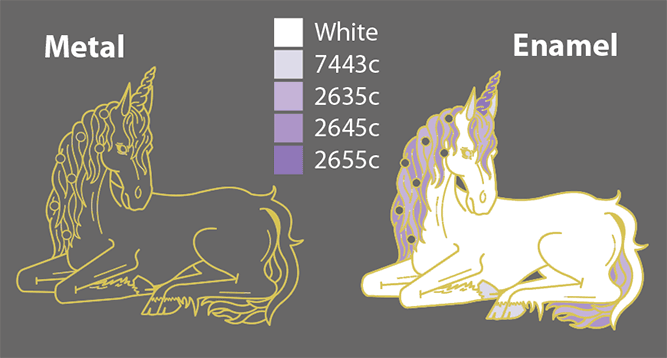
Submitting Your Pin Artwork
We offer free artwork setup, meaning we can accept any kind of file you have, even if it's a sketch! If you have a vector format file, such as Illustrator, Corel Draw, EPS, or SVG, make sure to send that. We can also easily work with Photoshop files. If you only have a .jpg of your design, that's ok too! Just send us the highest resolution file you have. We will take care of the rest for you. Make sure to let us know how many colors you'd like and where they appear on your pin. If you have PMS colors for us to match, send those over too!
Get Quote Now!Rainbow Plated Pins
Rainbow plating's incredibly eye-catching and vivid appearance will make your pins stand out from the crowd.
Rainbow-platied pins come in a spectrum of colors that radiate outward. The colors shift and change depending on how long the process is applied to the pin. It will start out blue, then change to yellow, pink, purple, teal, and green. If you order a batch of rainbow pins, expect to see a variety of colors on each individual pin. One pin may be mostly purple and another may end up mostly green. This means that each individual rainbow-plated pin is 100% unique!

Above is the spectrum of colors that you can expect to see on rainbow pins.
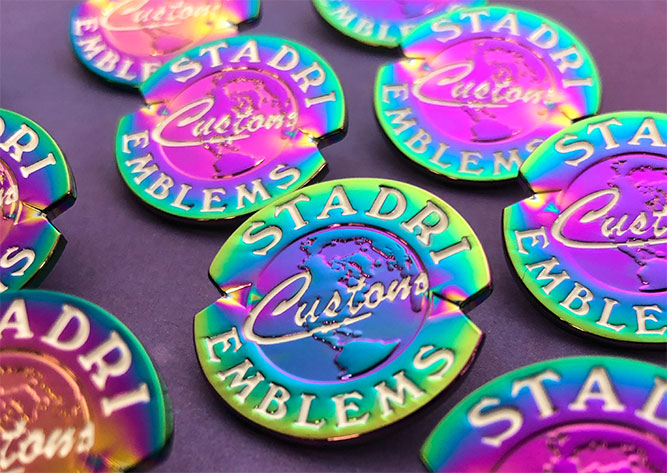
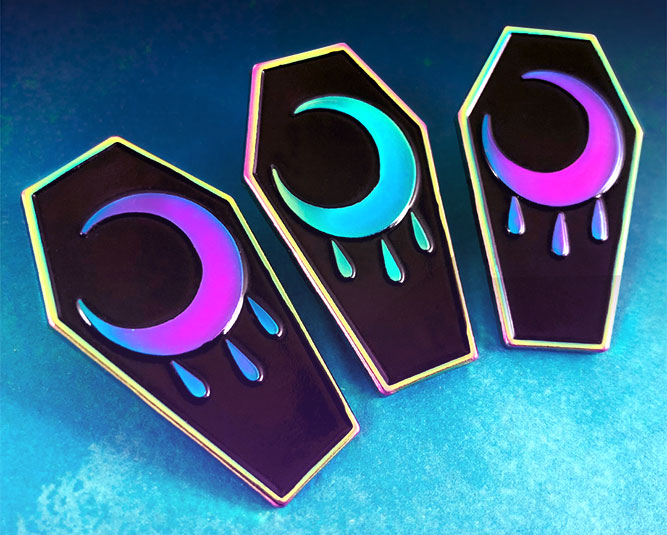
The process is called "anodizing"
First, metal pins are cast in a mold, just like any other. Before any enamel is added, the pins are carefully cleaned and prepared for the anodizing process. A chemical solution is created that the pins are submerged into. A grounding wire is then attached to each pin, and an electrical charge is passed through the metal with a wire. The chemical reaction with the electricity creates an amazing rainbow effect on the metal.
This process only needs to be done for a few seconds to change the metal's color. Applying the electricity for even half a second more can drastically alter the color. The final colors are determined by how long the electrical charge passed through them. The pins are then washed of the chemical solution; then the enamel is added, if needed.
Adding enamel is optional
With other types of metal finishes, designers usually pick out a few enamel colors to add to their pin. With rainbow metal, some designers are opting to forgo the enamel altogether. The choice to add enamel or not is entirely up to you. You can add any colors that you'd like but, most commonly, we see rainbow pins with simply black or white enamel added in certain areas. This gives some contrast to the rainbow metal, and is usually used to highlight certain parts of the design.
This process is only available with soft enamel.
Get Quote Now!